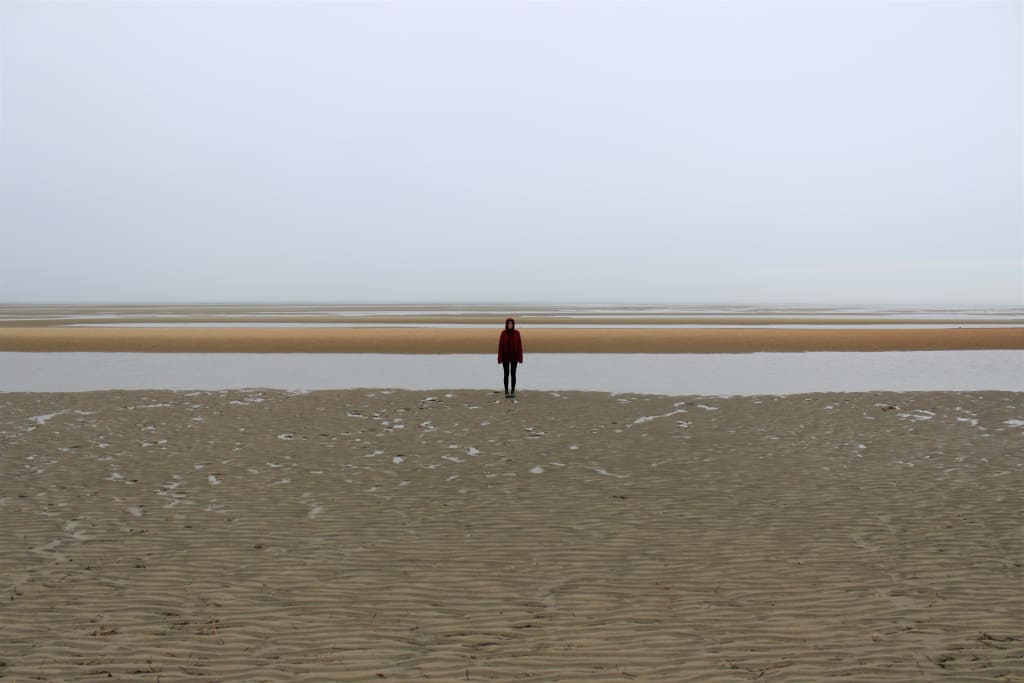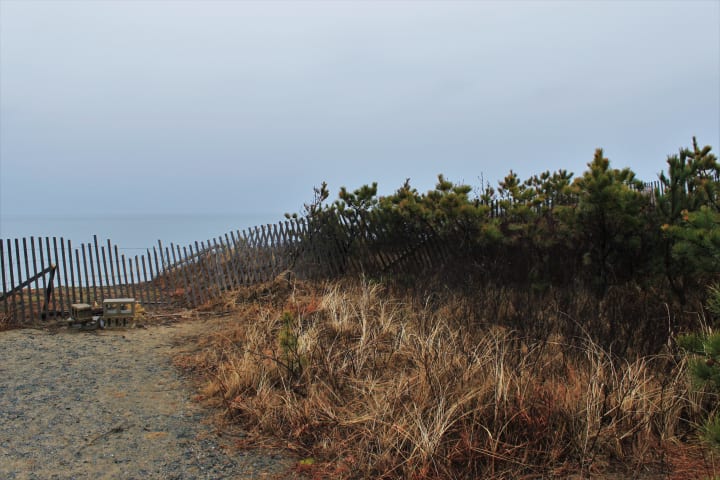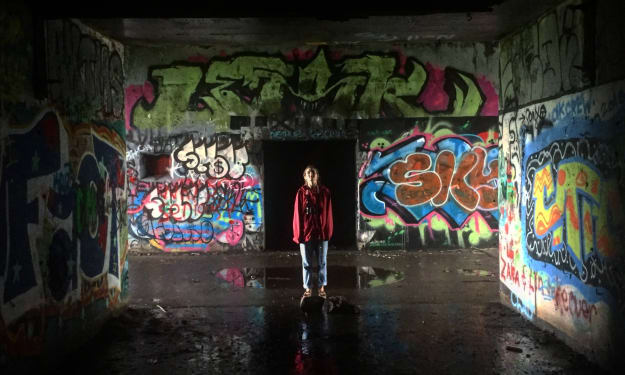
It was a weekend in midwinter and my girlfriend Hillary and I decided to take a drive down to Cape Cod. Rain was threatening, but we crossed our fingers that it would pass to the north of us. Hillary brought along a few old mixtapes and we made our way south down Pilgrims Highway.
Cape Cod seems vastly separated from the rest of Massachusetts. Dangling out into the Atlantic Ocean, it boasts a posh beach aesthetic with an underlying vulnerability. The architecture is different, the atmosphere is different, and even the land itself seems out of place in New England. Particularly on a dreary winter’s day, the little towns we passed through had the feeling of an off-season summer camp.
In the center of Eastham we pulled off the main road to explore a bit. Winding through the back roads, we passed modest family homes in sub-suburban neighborhoods. An exposed tidal marsh offered us a sour briny stench while we searched for the beach. Further along we came upon the site of the First Encounter.
A plaque beside the beach celebrates the 1620 interaction between the Pilgrims of the Mayflower and the Nauset tribe. A claim states that “there would be no Thanksgiving” if it weren’t for what happened along this desolate shore. Only upon further research did we discover that the pilgrims desecrated native burial grounds and huts here before moving on. These invaders would go on to massacre the native population with disease, war, and slavery for the next four hundred years.
With these sobering thoughts we parked and walked out across the beach. The tide was low and the sand went on forever. The rain started to come down in thin, cold spits, and we walked alone beyond the shellfish quay. The houses on the bluff looked down on us, abandoned by their residents for sunnier locales. It was sad to know what happened on these shores and the responsibility we bear. Here was the genesis of an ongoing genocide.

The rain increased and we made our way back to the car to continue up the Cape. Crossing to the ocean side of the peninsula, we came to Nauset Light Beach. Here we found more history and another ongoing crises.
A nondescript shack marks the location of a transatlantic submarine telegraph wire. Completed in 1879, the wire connected the United States to the European mainland for the first time. However, due to North Eastham’s isolated location, the Cape Cod telegraph headquarters were moved to Orleans. In 1898, when a new wire was laid, the wire to Nauset Light Beach became defunct. All that remains visible is an unfurnished and padlocked shack standing among a clump of pitch-pine trees. Hidden beneath the waves, the nearly 3,000 mile wire sits, dormant and forgotten.
Though we walked up to the Nauset Beach Lighthouse, we were unable to go down to the beach itself. North Eastham has struggled with coastal erosion for years and recent dune destruction barred our way. Research in 1994 found that the coastline was eroding at a rate of 12 feet per year. Recent storm surges have increased that amount dramatically, threatening local attractions and historical sites.
The rain abated and we continued up the road to Wellfleet, a town of 2,700 during the winter months. Of the towns we passed through, Wellfleet was the most active. Though the town center was far from bustling, we did spot a few patrons walking between the quaint shops and galleries.
At the town pier we got a glimpse of Wellfleet’s historic shellfishing industry. Though tourism has driven the town economy for decades, shellfishing still contributes about $5.8 million annually. Two harvest boats were anchored at the end of the pier and there was a gruff, blue collared aesthetic to the place.
Driving along the coast, we looked out across Wellfleet harbor to beautiful Great Island. 70% of Wellfleet’s land area is in protection and deemed “of critical environmental concern.” A single sandy hiking trail traverses this particular stretch of isolated coastline. We found the trailhead deserted, but thought better of hiking with the rain coming on again.
Returning to Route 6 we pressed on for Provincetown, our ultimate destination. As we drove north the fog descended and visibility became negligible. To our right, we saw ducks floating on the glassy waters of East Harbor. To our left, resorts and motels were boarded up for the season. Our's was the only car on the road.
In the summer months, Provincetown’s population swells to over 60,000 people. It is celebrated for its support of the arts and the LGBTQ community. In January, the tightly packed buildings seem lonely and forlorn. The monolithic Pilgrim Monument presided over the scene. While it celebrates the Pilgrim’s first landfall and the signing of the Mayflower Compact, the memory of First Encounter Beach jaded its existence for us.
We picked up sandwiches at Far Land Provisions, a classic general store and deli. While the atmosphere was excellent, the food left something to be desired. Looking for a more fulfilling dessert, we raced south back to Orleans. Hillary had long had her eye on the Hot Chocolate Sparrow, and we shared a decadent lava cake in the hip cafe. With darkness set in, we called it a day and returned to Boston.
Our midwinter day on Cape Cod was filled with striking visuals and poignant history. Without the crush of summer tourists, we were able to better interact with the land and our thoughts. Throughout the day I felt the place to be a bit haunted. The dreary weather, the bare ground, and the general desertedness all contributed to this.
At the same time, there was a lot more honesty in this Cape Cod. This was an unglamourous look at an often glamorized region. The sites that stuck in our minds did so for organic reasons. We felt the loneliness of the towns and beaches and the guilt of bloody and biased history. These feelings might not remain in the joy and warmth of summer sunshine. These revelations are reserved only for Cape Cod in mid-winter.
About the Creator
Jordan Long
Jordan Long is a writer, pilot, and adventure enthusiast living in Phoenix, Arizona. He blogs about travel, hiking, skiing, flying, the arts, the environment, and everything in between.






Comments
There are no comments for this story
Be the first to respond and start the conversation.